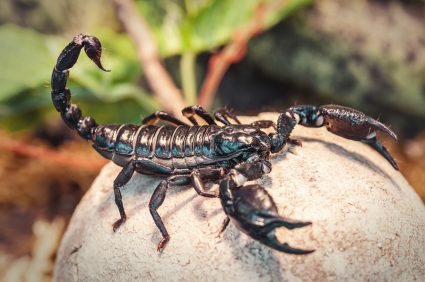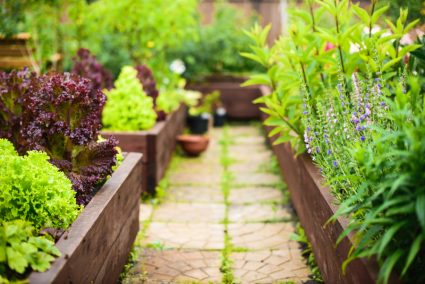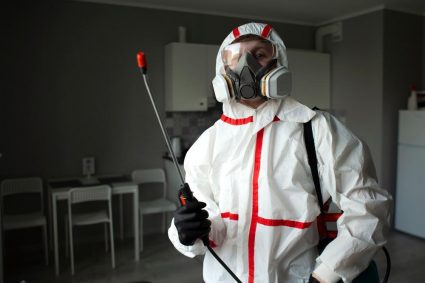
Most people use raised garden beds to block animal access to their gardens. But, this is only effective against some animals, as bigger animals can still climb through.
So, what can one do to keep animals out of raised garden beds entirely? We answered that question and a few others in this article!
Keeping animals out of raised garden beds entirely is possible. The first vital step is to identify the particular animals terrorizing your garden. Then, you can decide on a deterrent strategy to frighten off the animal.
Depending on which animal is breaching through your raised garden beds, here are some animal-deterring strategies you can deploy:
- Place deterrents like cayenne pepper, garlic, and soap around your raised garden beds.
- Add one or more plants that are less attractive to the terrorizing animals to your garden.
- Use garden bed covers.
Here are a few methods. The guide lets you find out how these and five other strategies work.
In the next few headings, we will teach you how to deter animals from your raised garden beds entirely using only DIY-friendly approaches. We will examine eight of these animal-deterring methods. So you can be sure to find a perfect fit for your garden. You will also find answers to a few questions about animal infestations in raised garden beds.
8 Ways To Keep Animals Out of Raised Garden Beds
Growing a garden can be a fulfilling experience and a valuable contribution to the ecosystem. However, you may have to deal with unwanted guests like pests and animals disturbing your plants. These animals may leave droppings, uproot plants and feed on your vegetables.
As good as having a raised garden bed is, it cannot prevent all animals from entering the garden. To shut the door of your garden against tall animals like deer, you need to compliment your raised garden beds with other pest-deterring strategies.
Below, we describe some of these methods you can consider:
1. Identify The Pests
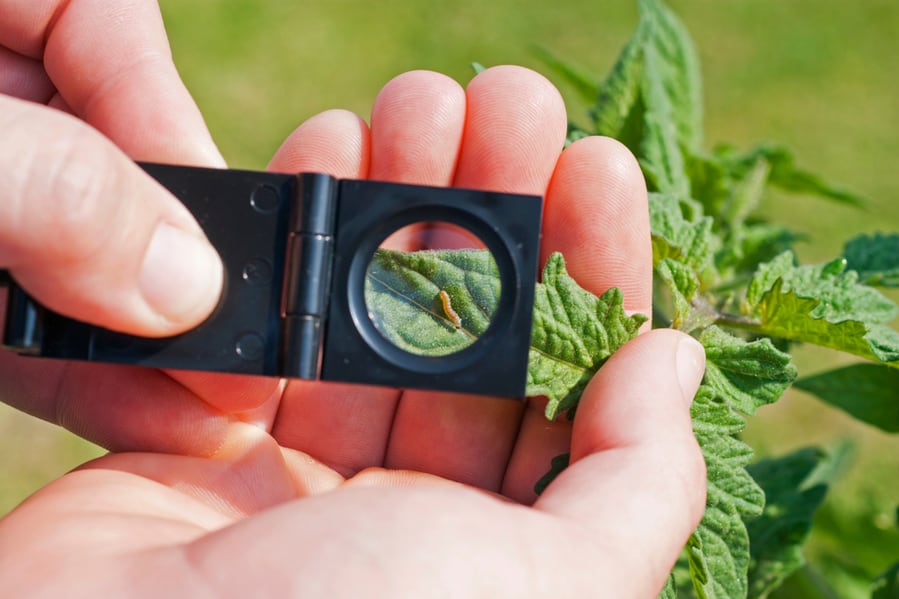
You can’t leave your garden to chance, and trying different methods without positive results will wear you out. To determine the right pest management strategy, you must identify what animal is disturbing your plants.
Animals leave tell-tale signs that can help you identify them. For example, deers tear out plants and leave visible tracks. Rabbits leave their droppings and leave sharp cuts on plants.
Birds leave holes in plants and fruits. They harvest your garden ever before you know anything is ripe. Squirrels dig up plants and leave the split husk of nuts behind.
Once you have identified the animals terrorizing your plants, you can decide on a deterrent strategy.
2. Fence Your Garden Beds
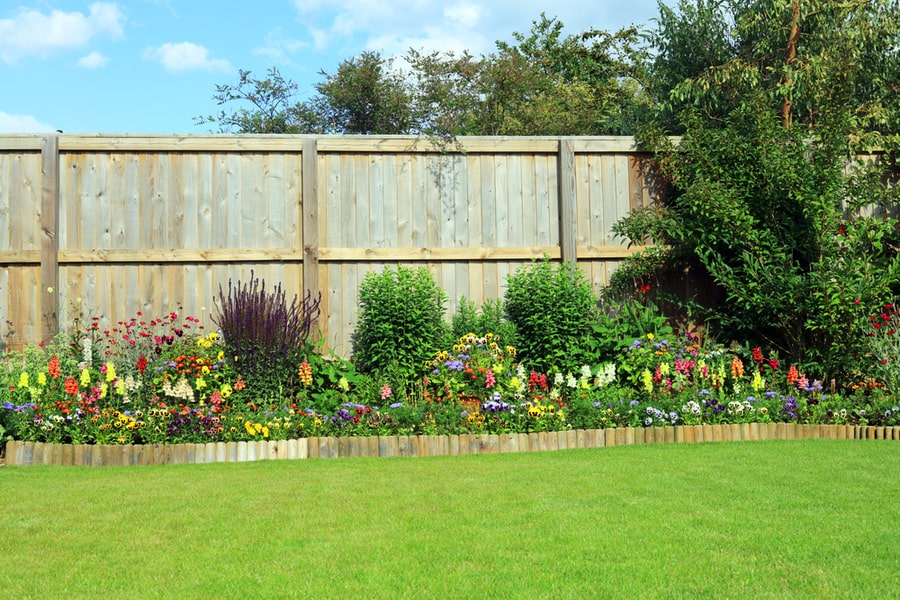
Fencing remains one of the most effective ways to keep animals out of your raised garden beds. It creates a barrier between the unwanted animals and their potential food source.
However, the length of the fence matters, as not all fences can keep animals out. For example, a two to three feet tall fence can work against small animals like rabbits.
Sometimes, persistent rabbits may burrow underneath the fence to get past it. It is advisable to bury the fence at least a foot into the ground.
Rabbit fencing and chicken wire are inexpensive alternatives that work against smaller animals. But for larger pests, you need to take the fence higher.
A four, six, or eight-inch fence can keep large animals like deer out. You can even drop irregular-shaped rocks around your raised garden beds. Hooved animals hate to walk over unstable, rocky ground and will stay away.
You can use plastic bird netting over small plant bushes like berries to deter animals from touching them.
3. Use Garden Bed Covers
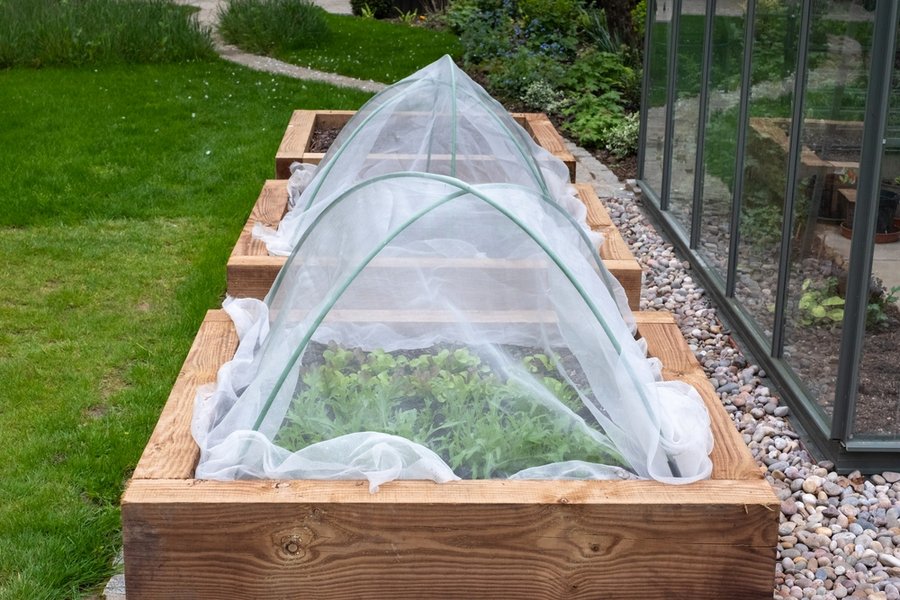
Garden bed covers like mini-greenhouses and plant tents help to protect vegetable gardens from pests and harsh weather elements. These protective covers can protect plants from small pests like insects and cabbage worms to bigger pests like deer.
Unlike temporary pest control remedies, you can leave these protective covers on for a long time. Some common garden bed covers are made from mesh, netting, and insect barrier fabric.
They are then hung on hoops over the raised garden bed to keep animals out. Common examples include hoop houses made from sheet plastic and PVC, which are easy to set up and disassemble.
4. Add Less-Attractive Plants To Your Garden
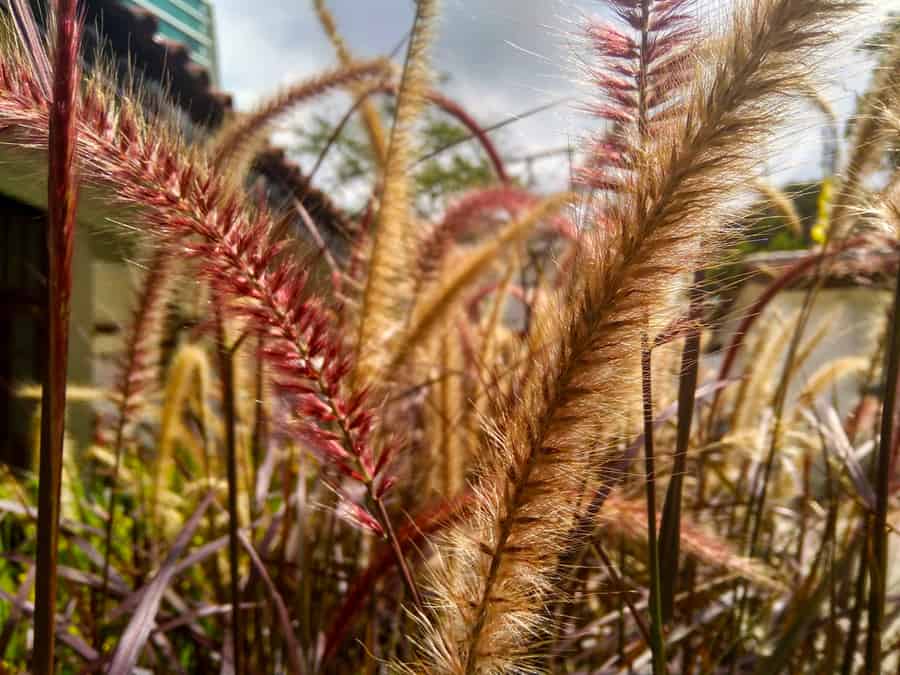
When animals are hungry, they can eat almost anything. However, some plants are an absolute no for pests.
If you have identified the particular animal that comes around your garden, find out what plants they find repulsive. You can add these less-appealing plants to your garden to confuse the pests and discourage them from coming around.
Rabbits, for one, do not like marigolds, boxwood, or peony. Daffodils, mullein, hyssop, and bleeding hearts are some plants that repel deer.
Apart from mixing these plants with your vegetables, you can plant them in the perimeter of your garden. This creates a fence of distasteful plants that will turn these pests away from your garden entirely.
5. Place Deterrents Around Your Raised Garden Beds
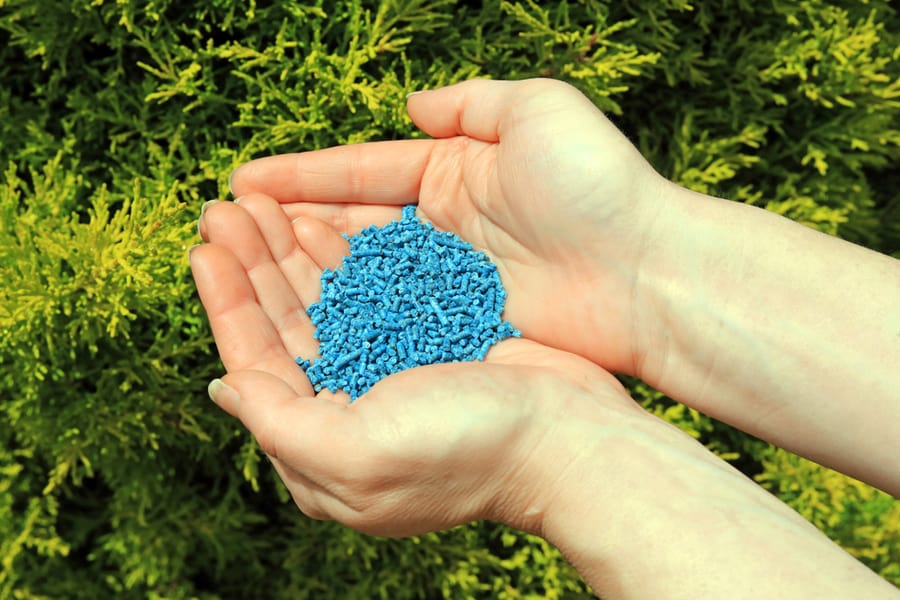
Animals often have a strong sense of smell, which helps them locate food sources. However, you can use this characteristic against them by applying odor and taste repellants to your garden. Some examples of these deterrents are cayenne pepper, garlic, and soap.
Odor repellants release an unpleasant smell to pests and will keep them away from a specific area. These smells send a signal to the pests that your garden is unsafe. For example, some pest repellants mimic predator urine which can scare pests and protect your garden from an invasion.
If you don’t want to use this option, get some taste repellants and spray them on your vulnerable plants. The repellant causes pests to fall sick after eating the affected plants.
Although the repellant may upset animal stomachs, it does not kill them. It only keeps them from returning. However, this method is not foolproof, as some animals may adjust to the terrible taste and return for more.
Plus, this technique requires constant application because the repellants can wash away when it rains. These repellants can even harm your pets if you do not take the necessary precautions.
Alternatively, you can use visual and auditory devices to repel these pests. These include motion-activated sprinklers, ultrasonic repellers, reflective tape, and plastic predators.
However, pests can get used to these devices over time, making them less effective. So, using more than one strategy is advisable for better results.
6. Feed The Pests
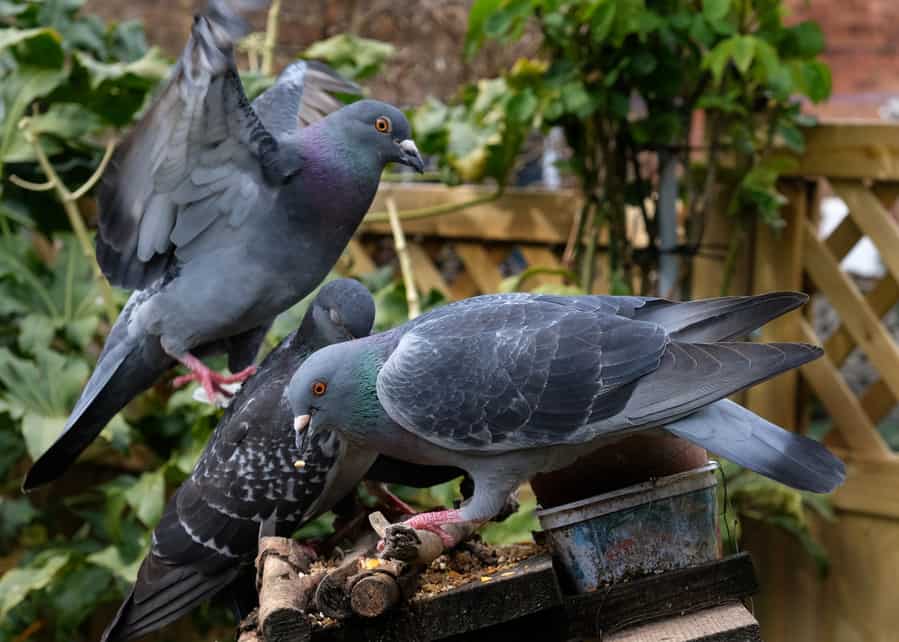
This may look like a counter-productive strategy, but it works. If the pests have something else to eat, they will leave your plants alone.
If you stay in a rural area, allow the grasses and shrubs around your building to grow. This serves as a distraction since pests are less likely to come to your garden if there are other alternatives.
But, if you stay in an urban, residential area, this strategy may not work, as it can disturb your neighbors. Instead, you can grow plants that pests love close to your garden.
Once you’ve identified the animal causing the nuisance to your garden, research their favorite foods. Then, grow them far from your raised garden beds to create a diversion and lead pests away from your plants.
For rabbits, you can plant clovers or alfalfa because they love them. The sweet flowers will also attract bees and improve pollination in your garden.
You can set up a feeding station away from your garden to distract squirrels. In this feeding station, spread nuts, dried corn, sunflower seeds, and other things squirrels love.
Then, set out a water bowl to prevent thirsty squirrels from running to your garden for water. You can set out a separate feeding station for birds and mix their feed with pepper to keep squirrels out.
However, do not try feeding a wild deer. The reason is that once it sees your house as a feeding area, it won’t leave. Instead, try another pest-repellant strategy for this animal.
7. Scare The Pests Away
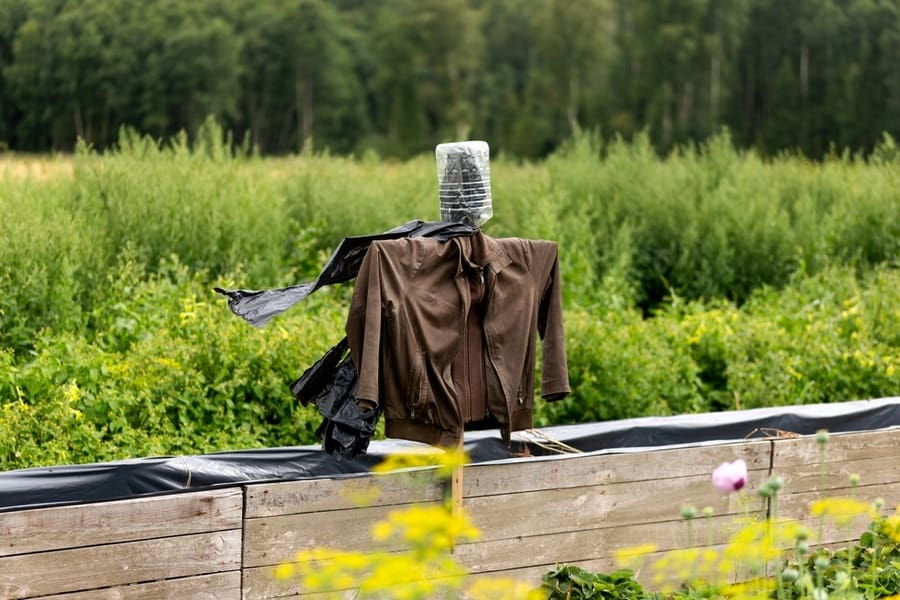
You can use many scare strategies to deter pests from your raised garden beds. However, their effectiveness depends on the pest in question. If you have cats or dogs patrolling your garden, rodents like rabbits and squirrels are less likely to come around.
But what can you do if you don’t have any pets at home? In such a case, you can set a bowl of cat food to attract stray cats to your garden. They can then watch your plants and enjoy a free meal as a reward.
A regular scarecrow, bird tape, shiny balloons, and metallic streamers can work for birds. However, you may need to move these around your garden. Once birds get used to the repellant staying in one place, they will quickly deduce that it is not real.
8. Manage Your Compost
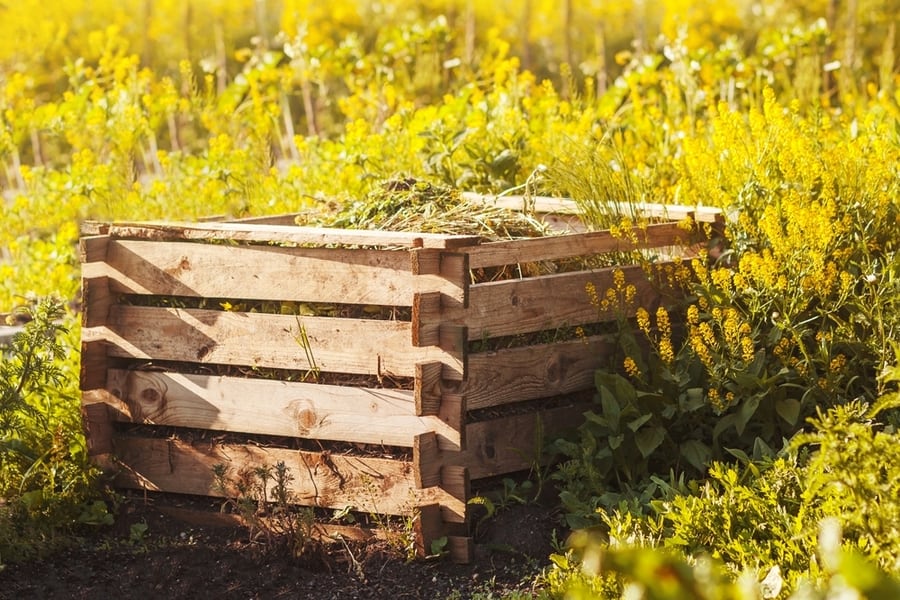
An open compost heap attracts hungry animals, and they may extend to your garden for more food options. To protect your garden from pests, use a self-contained compost container with a lid to keep animals away.
Remember to take their bowl inside before nightfall if your pets feed outdoors. Otherwise, the smell of their feeding bowl can attract the unwanted attention of animals like raccoons, skunks, and opossums.
If you store your bird seed or other food items outside, ensure they are secured in chew-proof sealed containers. That way, you limit the food sources that attract pests to your yard.
Takeaway
Protecting your flower or vegetable garden from pests often requires trial and error methods. This is especially true when you cannot tell what particular pest or animal visits your garden when you are not around.
One of the ways to protect your raised garden bed from pests is to line the bottom with stones. That way, animals will find it hard to dig through.
Above, we discussed other options to ward off pests/animals from your garden. However, before choosing a pest-deterring strategy, remember first to identify the particular animals invading your garden in your absence. This will help you avoid doing hit-and-miss in deciding the deterrent strategies to deploy.
Having done that, apply the pest-deterring strategies you feel will work best for you.
Frequently Asked Questions
Do Raised Garden Beds Keep All Animals Out?
Raised garden beds do not deter animals like deer and climbing rodents like rats, squirrels, and mice. They are only effective against animals like chickens, rabbits, ducks, and moles. For better results, combine raised garden beds with other deterrents like a fence.
What Are Raised Garden Beds?
Raised garden beds are gardening structures made of wood, concrete, brick, stones, and other materials. The purpose of this structure is to raise the soil above ground level in an enclosed structure. They make it easier to grow vegetables and help protect plants from common pests.



